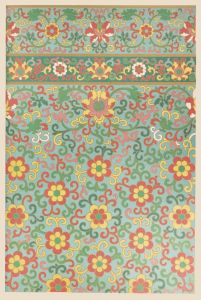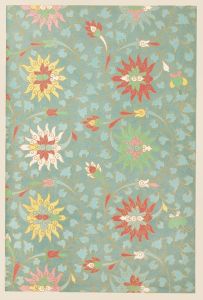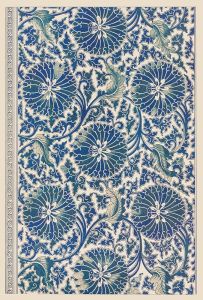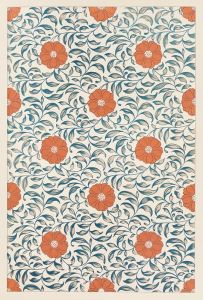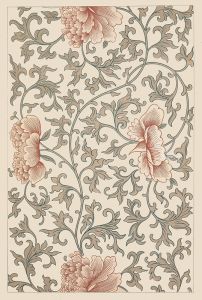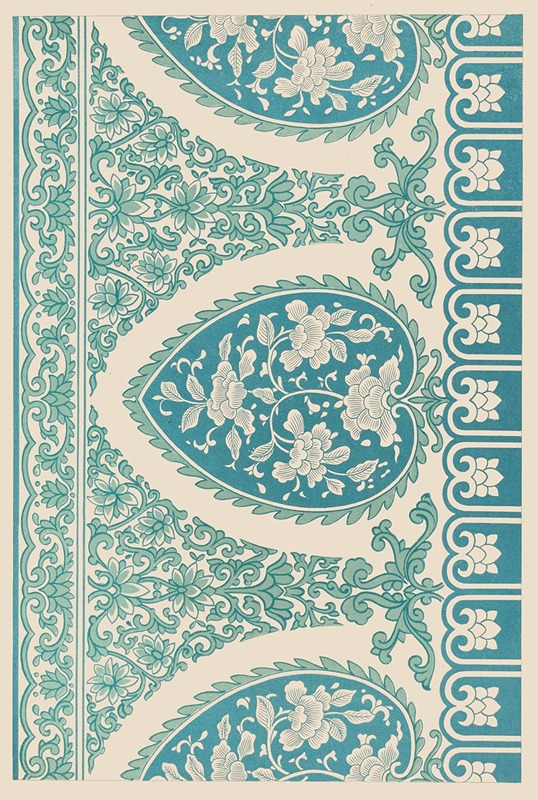
Examples of Chinese ornament, Pl.02
A hand-painted replica of Owen Jones’s masterpiece Examples of Chinese ornament, Pl.02, meticulously crafted by professional artists to capture the true essence of the original. Each piece is created with museum-quality canvas and rare mineral pigments, carefully painted by experienced artists with delicate brushstrokes and rich, layered colors to perfectly recreate the texture of the original artwork. Unlike machine-printed reproductions, this hand-painted version brings the painting to life, infused with the artist’s emotions and skill in every stroke. Whether for personal collection or home decoration, it instantly elevates the artistic atmosphere of any space.
"Examples of Chinese Ornament, Pl.02" is a plate from the influential design book "The Grammar of Ornament," authored by Owen Jones and first published in 1856. Owen Jones was a British architect and designer known for his work in color theory and his contributions to the decorative arts. His book aimed to provide a comprehensive collection of design patterns from various cultures around the world, serving as a resource for designers and artists during the 19th century.
The book "The Grammar of Ornament" is divided into several sections, each focusing on a different cultural or historical style of ornamentation. The section on Chinese ornament highlights the intricate and symbolic nature of Chinese decorative arts, which have a long and rich history. Chinese ornamentation is characterized by its use of symbolic motifs, vibrant colors, and intricate patterns, often reflecting philosophical and cultural values.
Plate 02 specifically showcases examples of Chinese decorative motifs, which may include elements such as floral patterns, geometric designs, and symbolic imagery like dragons, phoenixes, or other mythological creatures. These motifs are often found in various forms of Chinese art, including textiles, ceramics, architecture, and metalwork. The designs are typically symmetrical and balanced, reflecting the Chinese aesthetic principles of harmony and order.
Jones's work was significant in that it introduced Western audiences to the beauty and complexity of non-Western design traditions. At the time of its publication, the Western world was experiencing a growing interest in the arts and cultures of Asia, partly due to increased trade and interaction between Europe and Asia. "The Grammar of Ornament" played a role in this cultural exchange by providing detailed illustrations and descriptions of Chinese and other global design traditions.
The illustrations in "The Grammar of Ornament" were produced using chromolithography, a method of printing in color that was relatively new at the time. This allowed Jones to accurately reproduce the vivid colors and intricate details of the original designs, making the book not only a valuable resource for designers but also a work of art in its own right.
Jones emphasized the importance of understanding the principles behind the designs rather than merely copying them. He believed that studying the underlying principles of ornamentation from different cultures could inspire new and innovative designs. His work encouraged designers to appreciate and learn from the rich traditions of other cultures, promoting a more global perspective in the decorative arts.
Overall, "Examples of Chinese Ornament, Pl.02" represents a small but significant part of Owen Jones's broader effort to document and celebrate the diversity of global design traditions. His work continues to be studied and appreciated for its contribution to the understanding and appreciation of world art and design.









